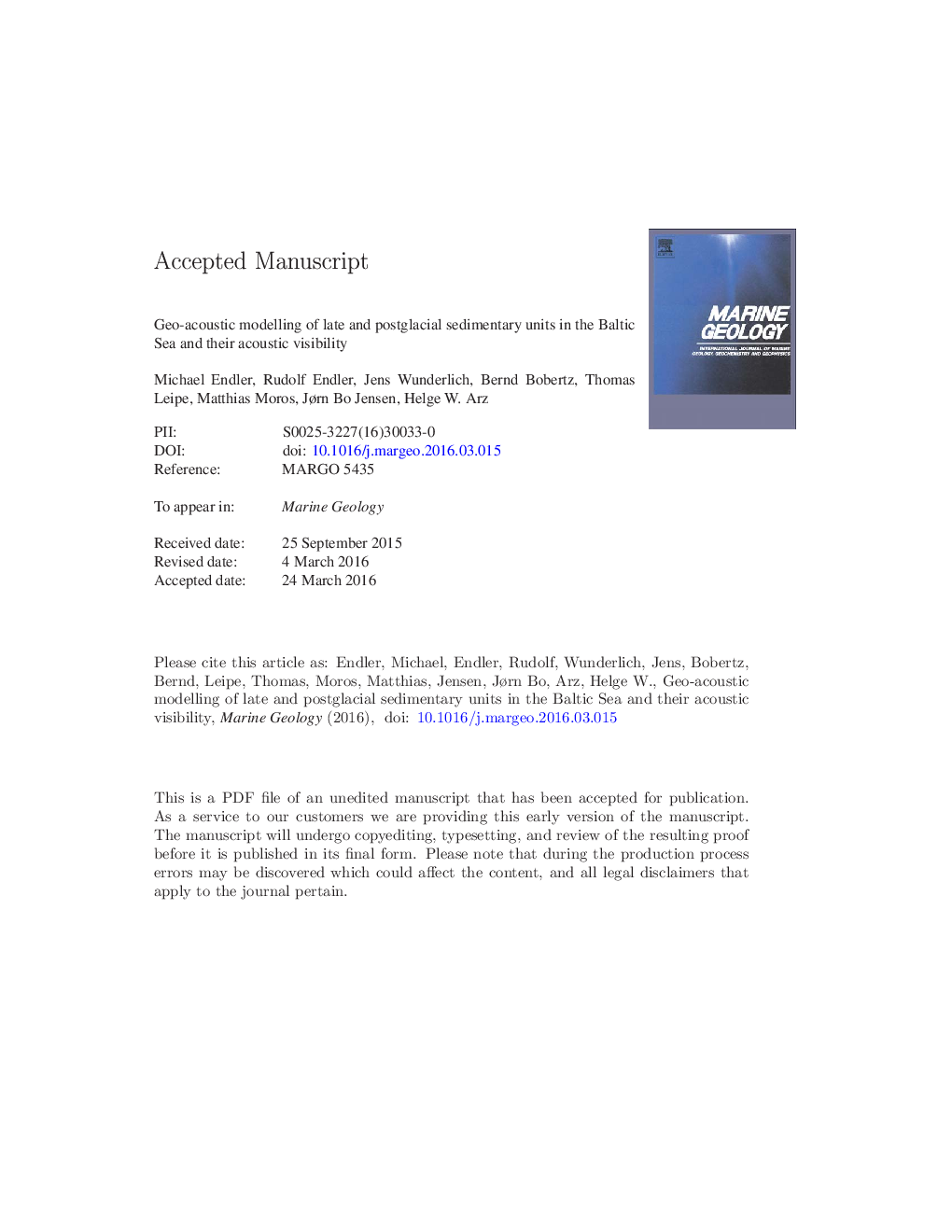| Article ID | Journal | Published Year | Pages | File Type |
|---|---|---|---|---|
| 6441463 | Marine Geology | 2016 | 53 Pages |
Abstract
Acoustic profiling methods are commonly used in the geosciences to obtain knowledge about the sedimentary structures of marine deposits. However, their interpretation and the correlation of acoustic reflectors with sedimentological boundaries remain difficult. The gradient in acoustic impedance determines the intensity of acoustic reflectors, which are not necessarily sedimentary boundaries. Suitable geo-acoustic models that cover a wide range of sediment types have not yet been developed for the Baltic Sea. Based on comprehensive investigations of sediment cores from Mecklenburg Bay and the Arkona Basin, we developed geo-acoustic models that enable the transfer of laboratory p-wave velocity measurements to in situ conditions while considering changes in pressure, salinity, temperature and the frequency dependence of the p-wave velocity (i.e. acoustic dispersion). This modelling allows the calculation of the wet bulk density and in situ p-wave velocity (from which the acoustic impedance is calculated) from core logging and selected sedimentological data, such as the water content, loss on ignition, and grain size. Precise plotting of core data into the acoustic profiles is now possible and represents a crucial step towards the interpretation of these profiles. Modelled p-wave velocities are used to convert two-way-travel-time to depth. The average sedimentological parameters for the different development phases of the Baltic Sea are calculated using geo-statistical methods and may allow for rough p-wave estimations if core logging data are not available.
Related Topics
Physical Sciences and Engineering
Earth and Planetary Sciences
Geochemistry and Petrology
Authors
Michael Endler, Rudolf Endler, Jens Wunderlich, Bernd Bobertz, Thomas Leipe, Matthias Moros, Jørn Bo Jensen, Helge W. Arz,
